Summer Gardens, Children and Colour
Hello
Spending your summer in the garden is the best way to enjoy the weather and time off. The summer months can be difficult to keep your children entertained all day for six weeks. However, your garden is full of easy and fun activities for children to do.
5 tips for having fun with your children in the garden
Whether they are your children, grandchildren, nieces, nephews or children you care for, encouraging a love of gardening by finding things out works for little ones and those who are older.
Yes, you could buy them a child-sized trowel (good idea), but there’s much more fun to be had! Such as these tips…
1 - Finding new uses for toothbrushes
Toothbrushes make the best small cleaning utensils. Get out your old toothbrushes, fizz up some water with bicarb and a drop of lavender oil and get cleaning. You can clean up old terracotta plant pots, which children can then decorate to make your garden unique. Check out British Garden Centres Young Gardeners' Summer Holidays Blog.
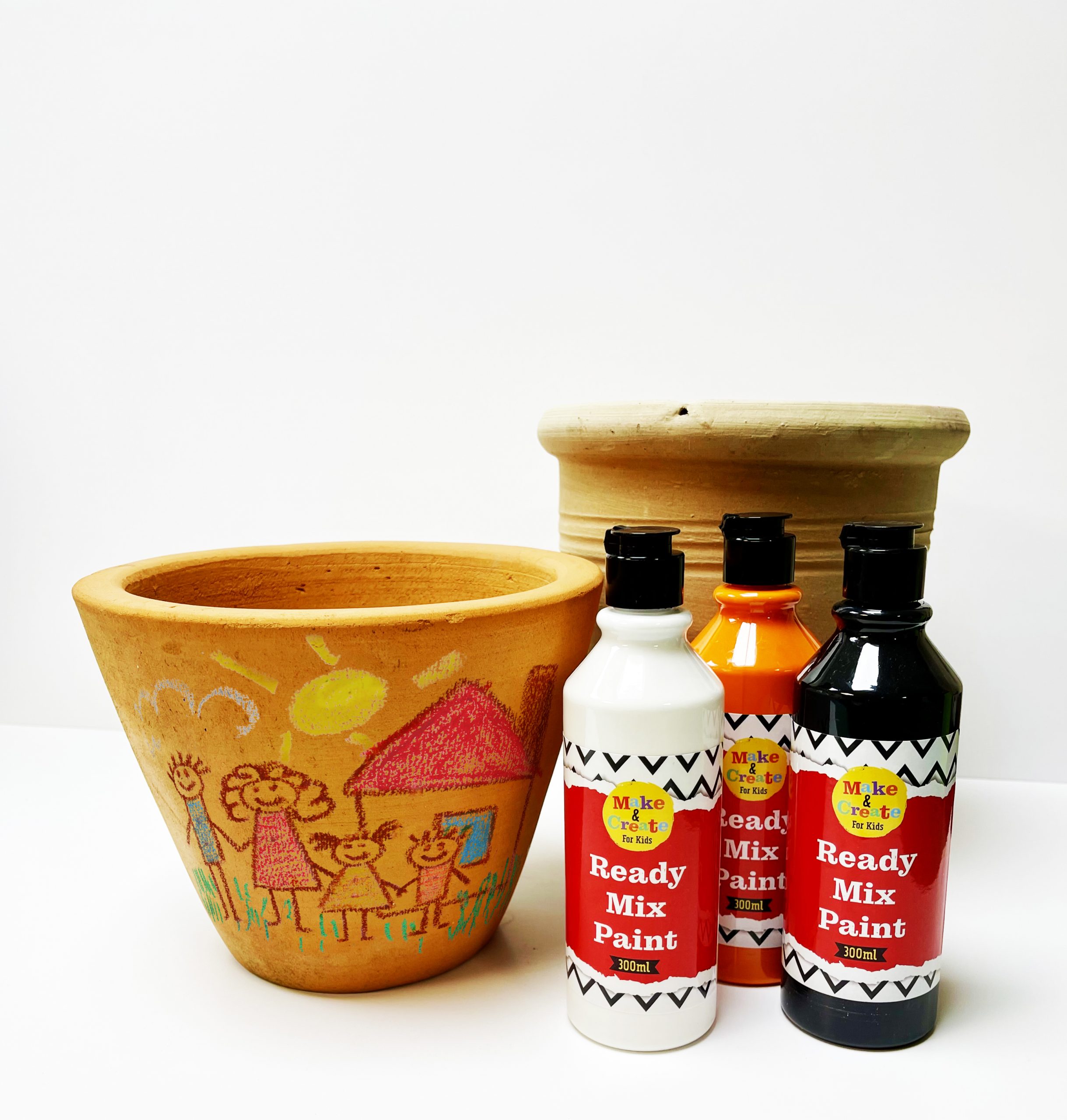
2 - Will the seed germinate?
As this doesn’t work for all seeds, especially at this time of the year, choose packets of hardy annual flowers and beans for a reliable experiment. Sometimes the garden centre has reduced the price of seeds in August, but as you only need a few seeds for this, you’ll be able to sow the remainder in the garden. Gather together seeds, kitchen paper towel, plastic bags, a water spray bottle
- Lightly dampen a piece of towel with the spray
- Lay ten seeds from the same packet onto it
- Cover with another damp towel
- Fold; place in a plastic bag
- Label bag with variety and date
Repeat for each seed variety. Keep the bags warm and moist. They should germinate in 7-10 days.
How many of the 10 have germinated? 5 = 50% viability (easy maths!) Have the different types of beans and flowers got the same germination rate?
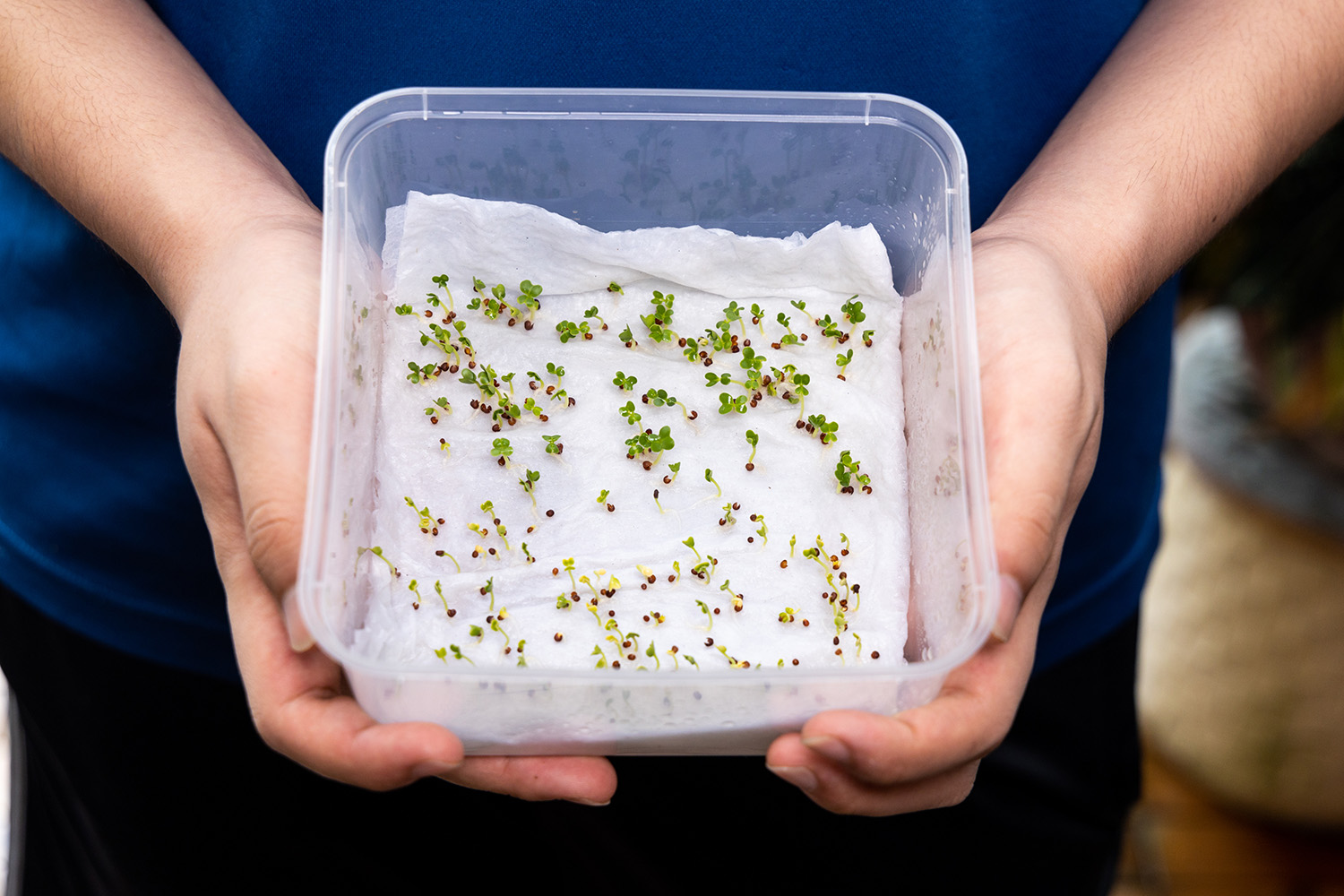
3 - Potted Plants and Recycling
Why not ask the children to help brighten up the kitchen theme and use washed food cans as plant pots? For example, instant coffee or syrup, has the advantage of no sharp edges for children to cut themselves on (as compared to the empty baked bean tin). Make holes in the base (you’ll need to do this for younger children) Fill the first centimetre or two with grit to improve drainage
- Add multipurpose compost to about halfway
- Then add the plant, having carefully loosened the roots a little
- Fill around the plant and up to about 1 cm from the top with more compost and gently firm in
- Place on a plant pot saucer to catch the drips and water in
Herbs and individual cut-and-come-again salad leaves are an obvious choice for a kitchen windowsill in coffee tins. Choose plants that are small enough so they don’t outgrow their container too quickly, the 9cm pot size from the garden centre is about right for most.
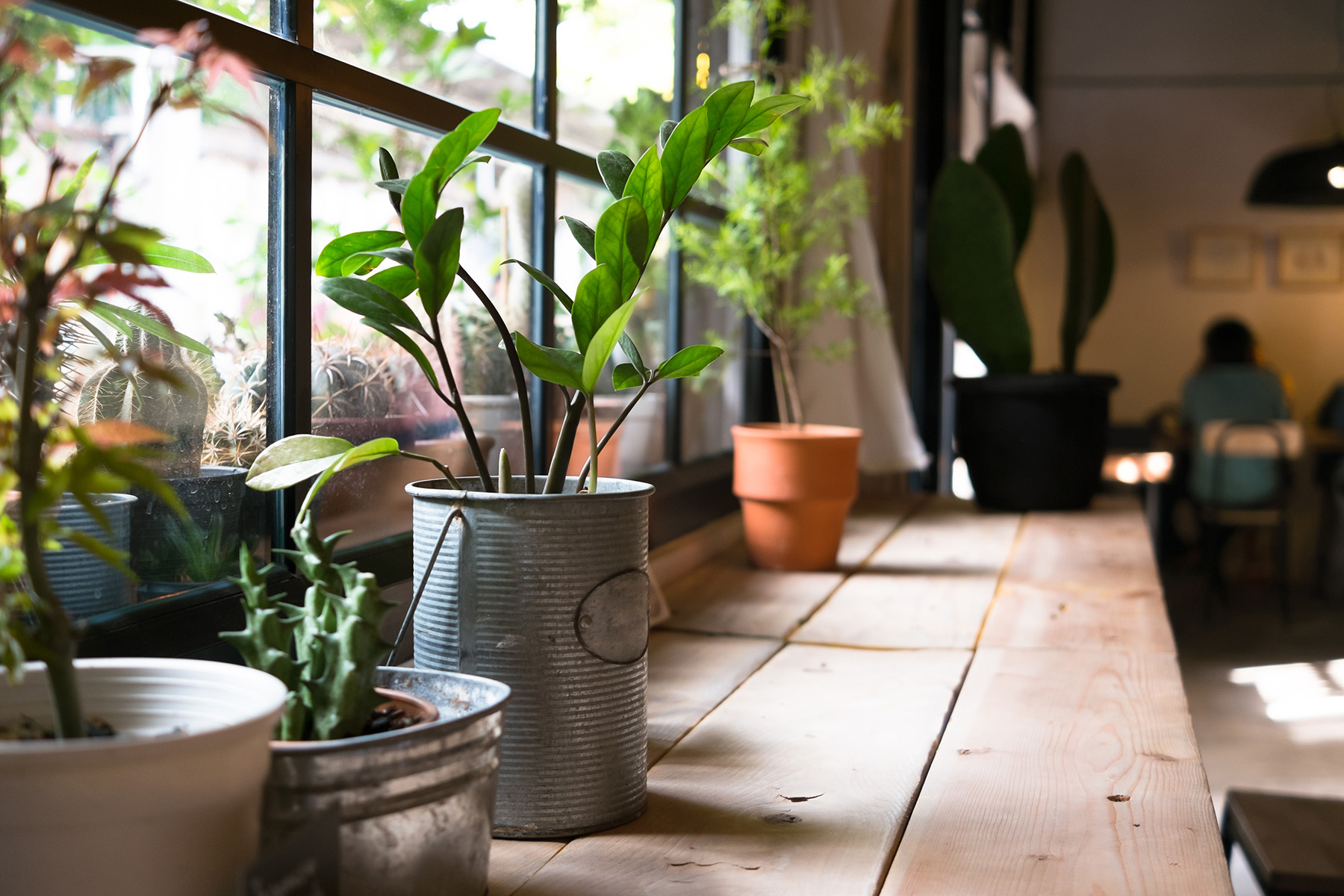
4 - Magic water
Collect a small spray of white or pale flowers. Fill a water jug and add food colouring. Once this is done, add in the flowers and then wait!
You’ll see the stem change colour from the bottom up, dying the flower petals. This shows children how plants take up water and nutrients.
To make it even more interesting, you can compare different types of stems for speed. For example, will the hollow stem of frothy Queen Annes' lace change colour more quickly than a baby’s breath Gypsophila?
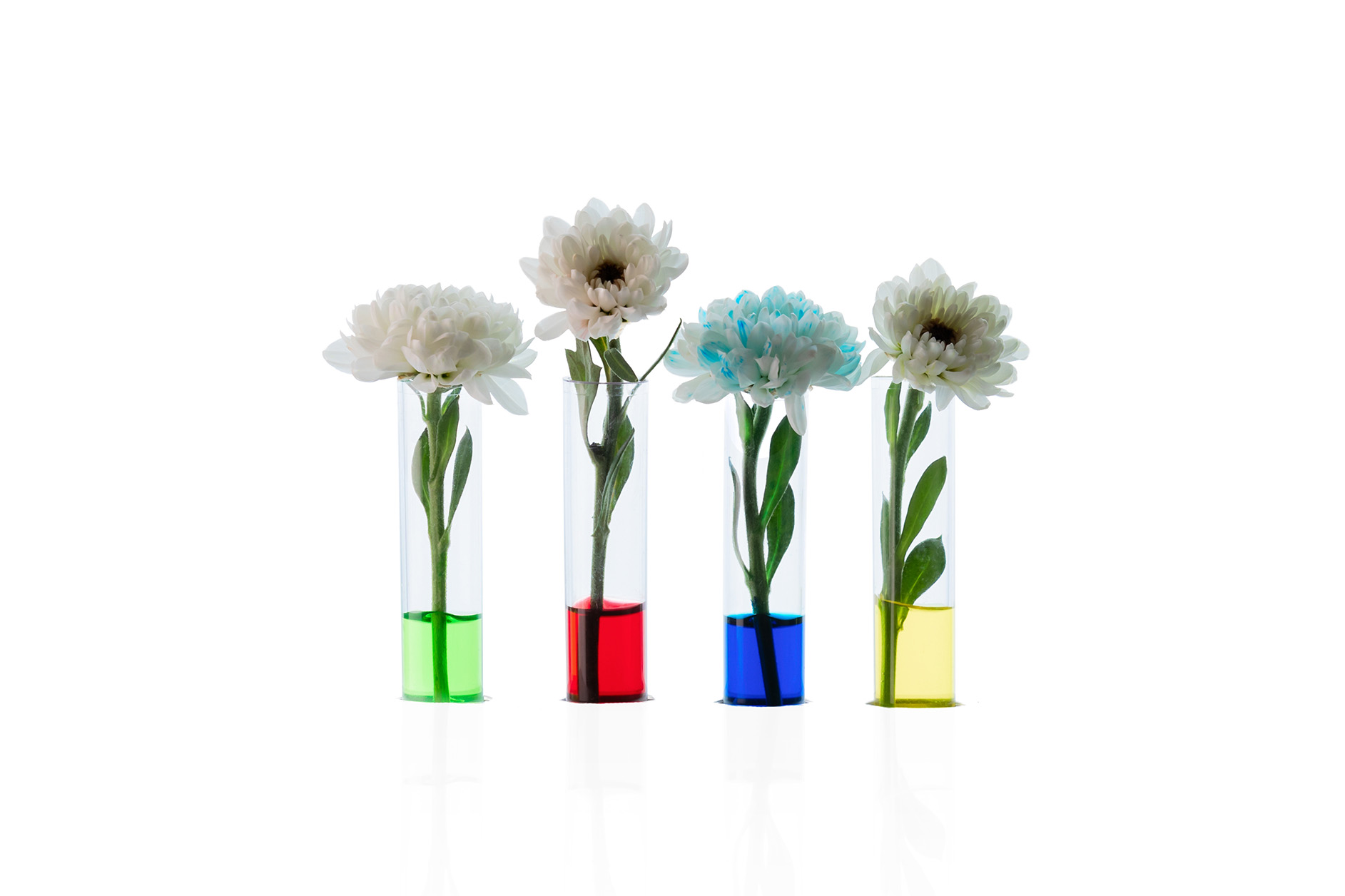
5 - Soil Testing
There are 4 main types of soil and they all feel different. Take some slightly damp soil in your hands and rub it: -
- Clay soil forms a ball that sticks together
- Sandy soil feels gritty when you rub it and falls apart
- Chalky soil crumbles easily and has white stones in it
- Silty soil feels silky
What do you have in your garden? You could also use a soil testing kit to discover whether you have acid or alkaline soil; easily purchased from a garden centre.
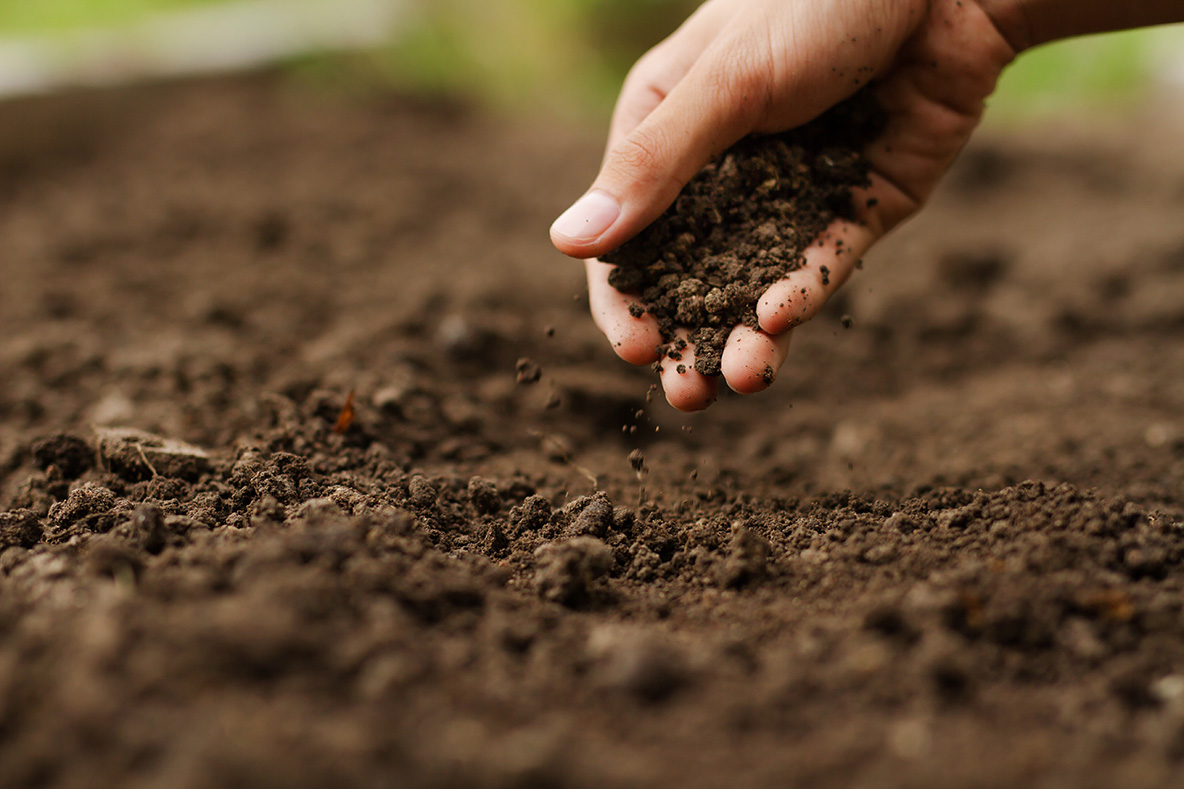
Colourful Late Summer Borders
Whilst the drought currently affecting the country does have an impact on our ability to dig holes in the flower borders and keep newly planted shrubs watered, there are ways around this. The two main ones are choosing plants which -
- Will grow happily in pots until they can be planted out in late autumn or spring
- And/or are drought tolerant
Tip for wetting the ground before planting
Keep a bowl in the sink and the bathroom basin. This enables you to save the water from the family washing their hands and use it where you need to dig and plant. Antibacterial soap may not be so good, so check the label.
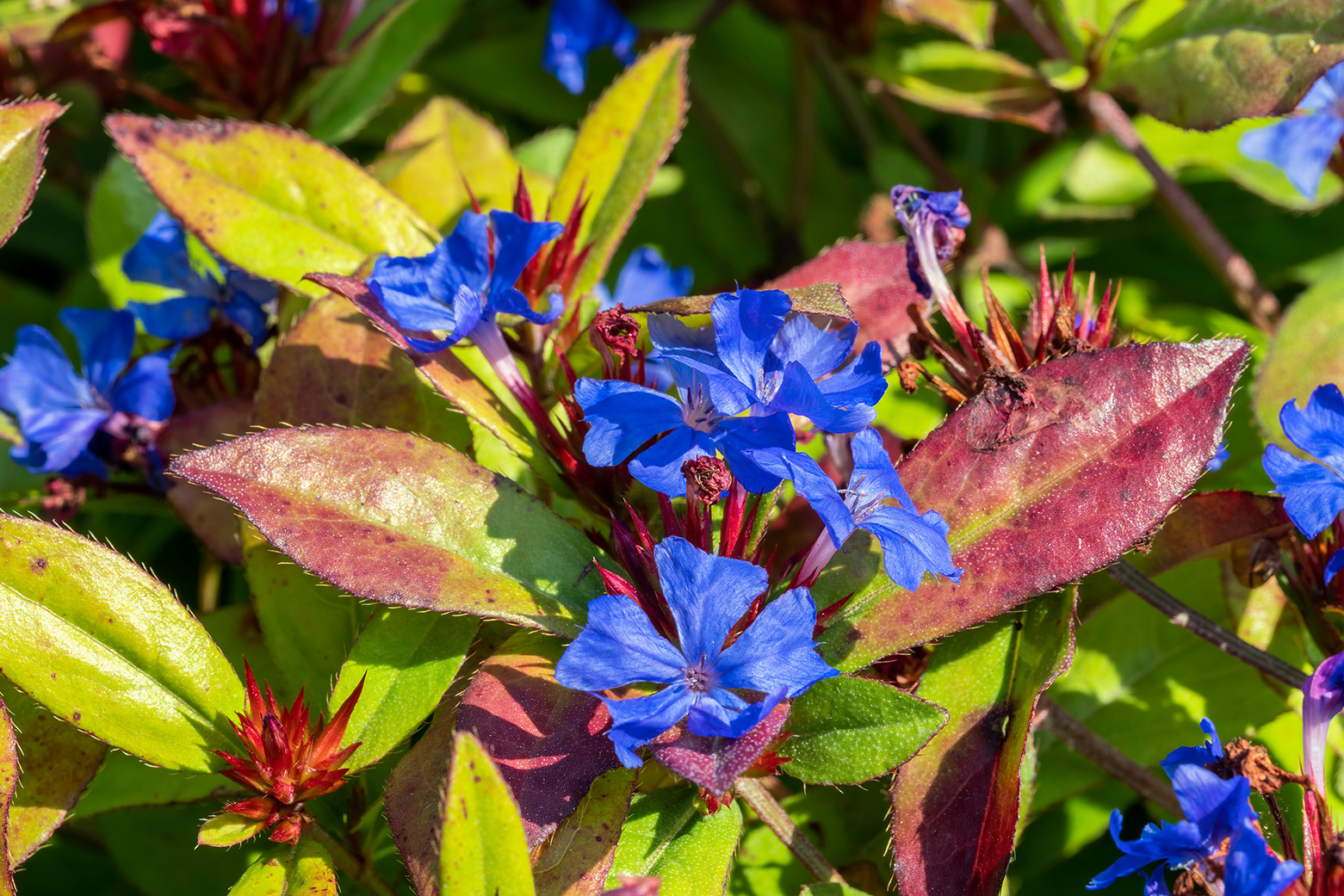
Ceratostigma
Ceratostigma wilmottianum is a 3’ tall shrub, Ceratostigma plumbaginoides offers ground cover. Both have rich, gentian-blue flowers with foliage which becomes redder as summer progresses into autumn.
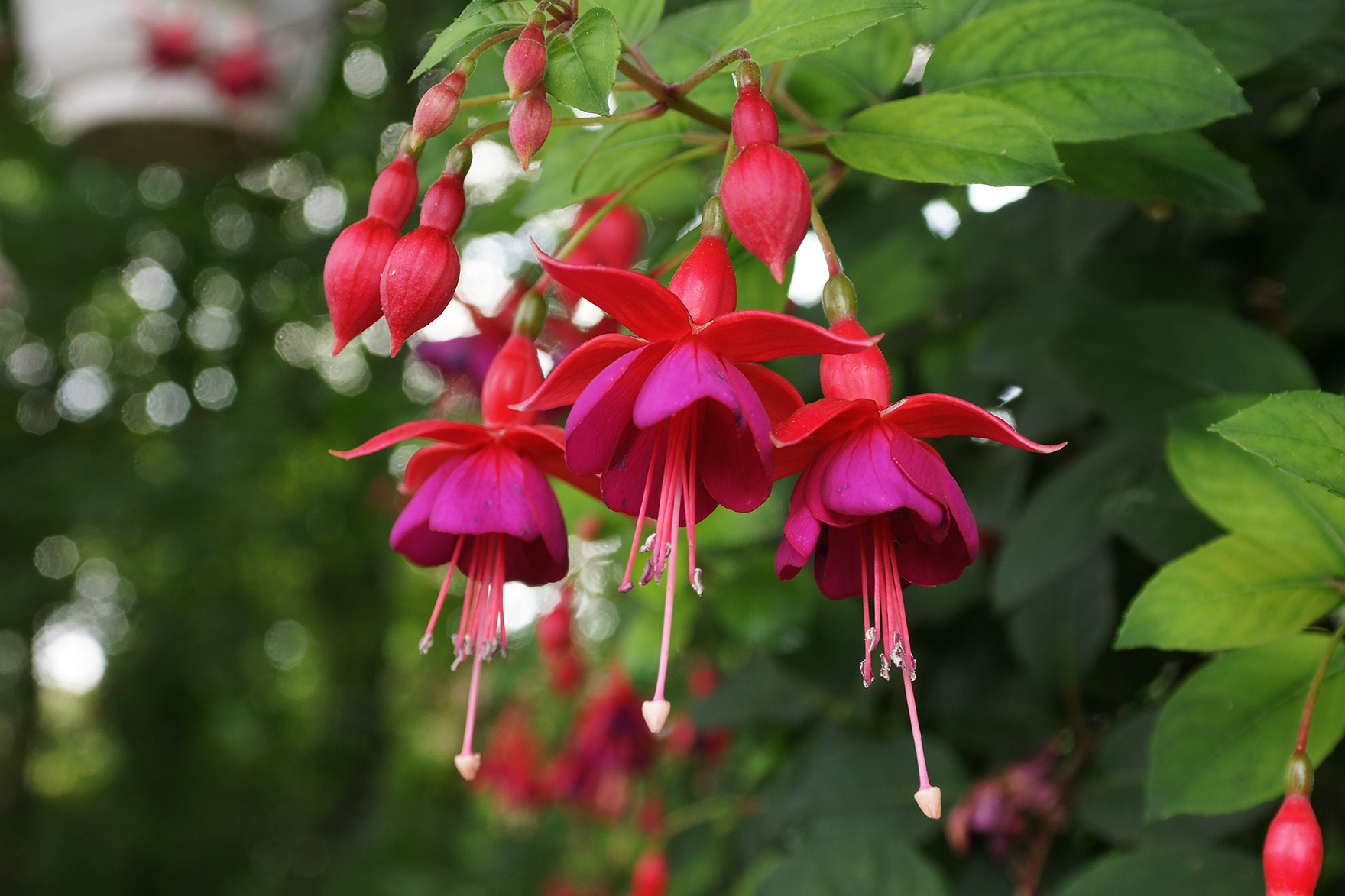
Fuchsia
There's a Fuchsia suitable for nearly every garden including coastal. Trailing varieties are obvious contenders for tall pots and hanging baskets but, bought as a small plant, any Fuchsia will be happy in a pot. This makes them an excellent choice for smaller gardens.
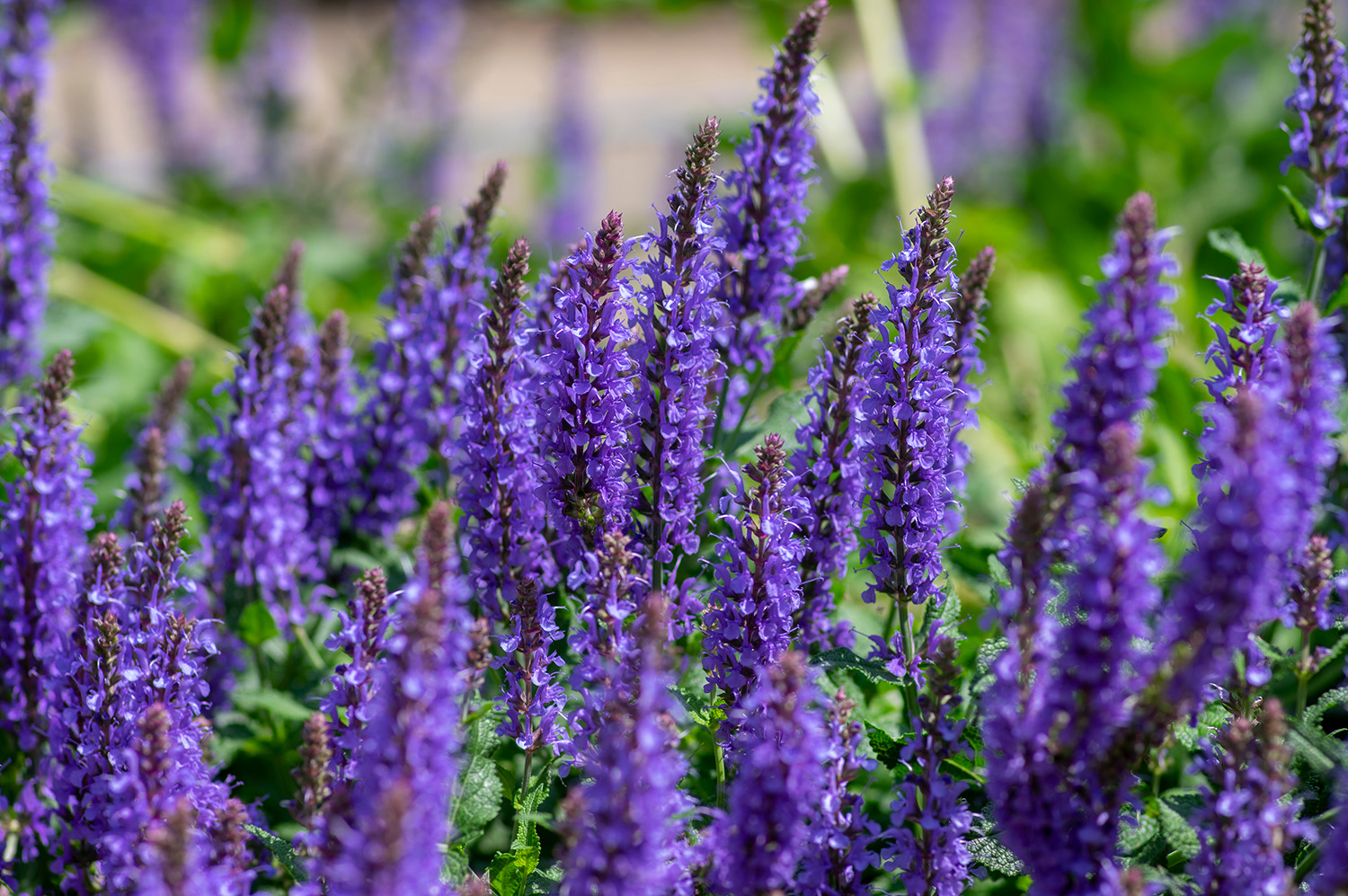
Salvia
If your garden is sheltered, then shrubby Salvias are excellent easy-maintenance plants for late summer colour. If you get heavy frosts in winter, then take cuttings as a backup (if you can find a non-flowering stem!) Or grow in pots and over winter in a greenhouse.
Salvia microphylla ‘hot lips’ is the most famous bi-coloured flower but give 'Cherry Lips' and 'Amethyst Lips' a try too. I also adore the well-named Salvia ‘heatwave blaze’ with deep crimson-pink flowers which in my Kent garden has coped with the extreme heat despite being in a pot.
Shady slightly damp spots
Because not all gardens bake in full sun!
Persicaria like damp soil, partial to mid shade and prefer morning to afternoon sun: generally speaking, the sunnier the spot the damper the soil needs to be. Try dark pink flowered Persicaria ‘firetail’ and the bronze-leaved Persicaria microcephala ‘red dragon’.
Herbaceous perennials
Time for a colour change as I suggest yellow, orange and bronze flowers.
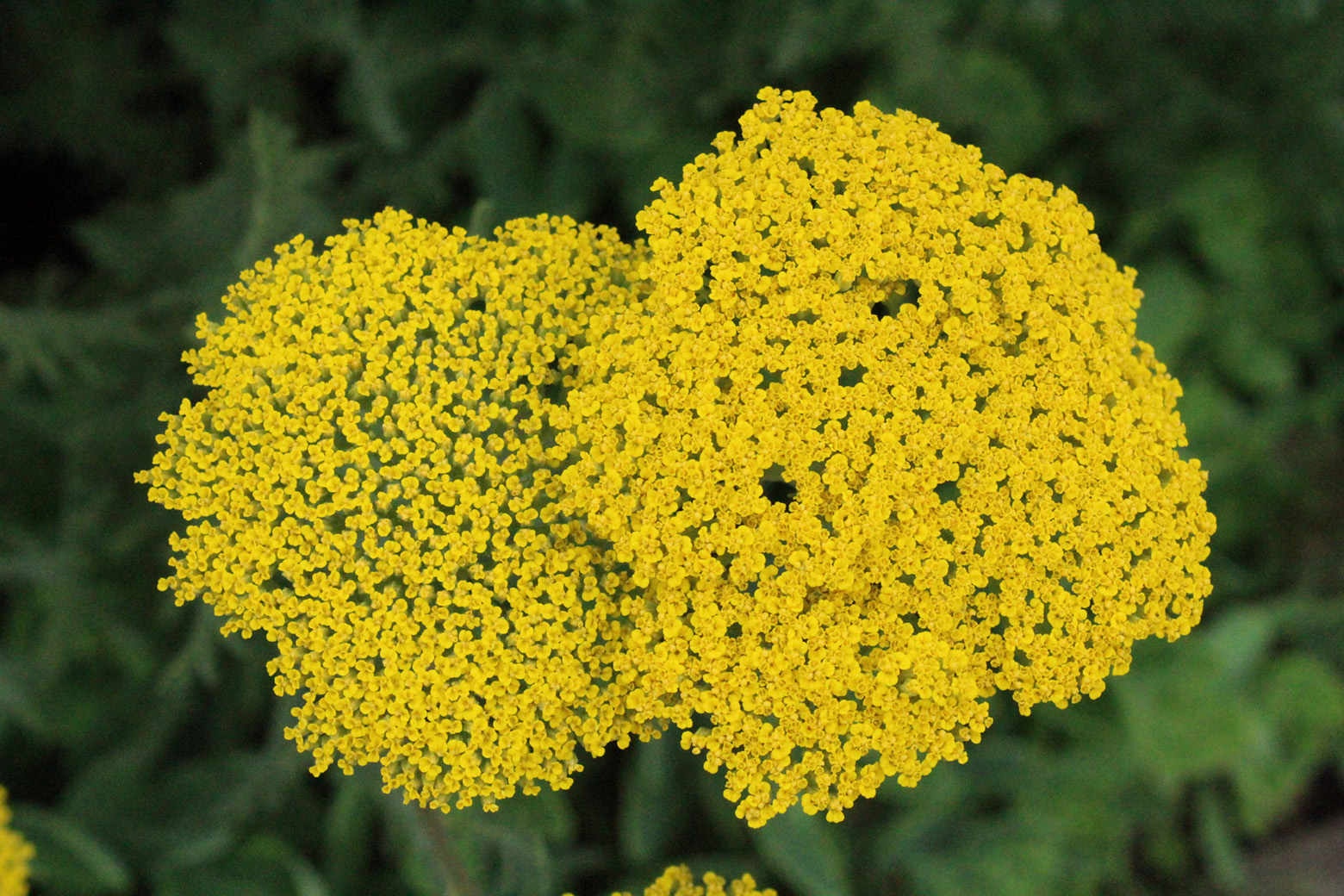
Achillea filpendulina ‘Cloth of Gold’. The fern-like foliage is slightly aromatic, possibly an acquired taste, so if you’re not keen plant this herbaceous perennial further back in the border. It will look good in a cottage garden and wildlife gardens and is happy in coastal gardens too.
Achillea millefolium 'Terracotta' has wide flat blooms ranging from dark orange to pale yellow. The foliage is finer than ‘cloth of gold’, and as it is silvery green, should be more drought tolerant.
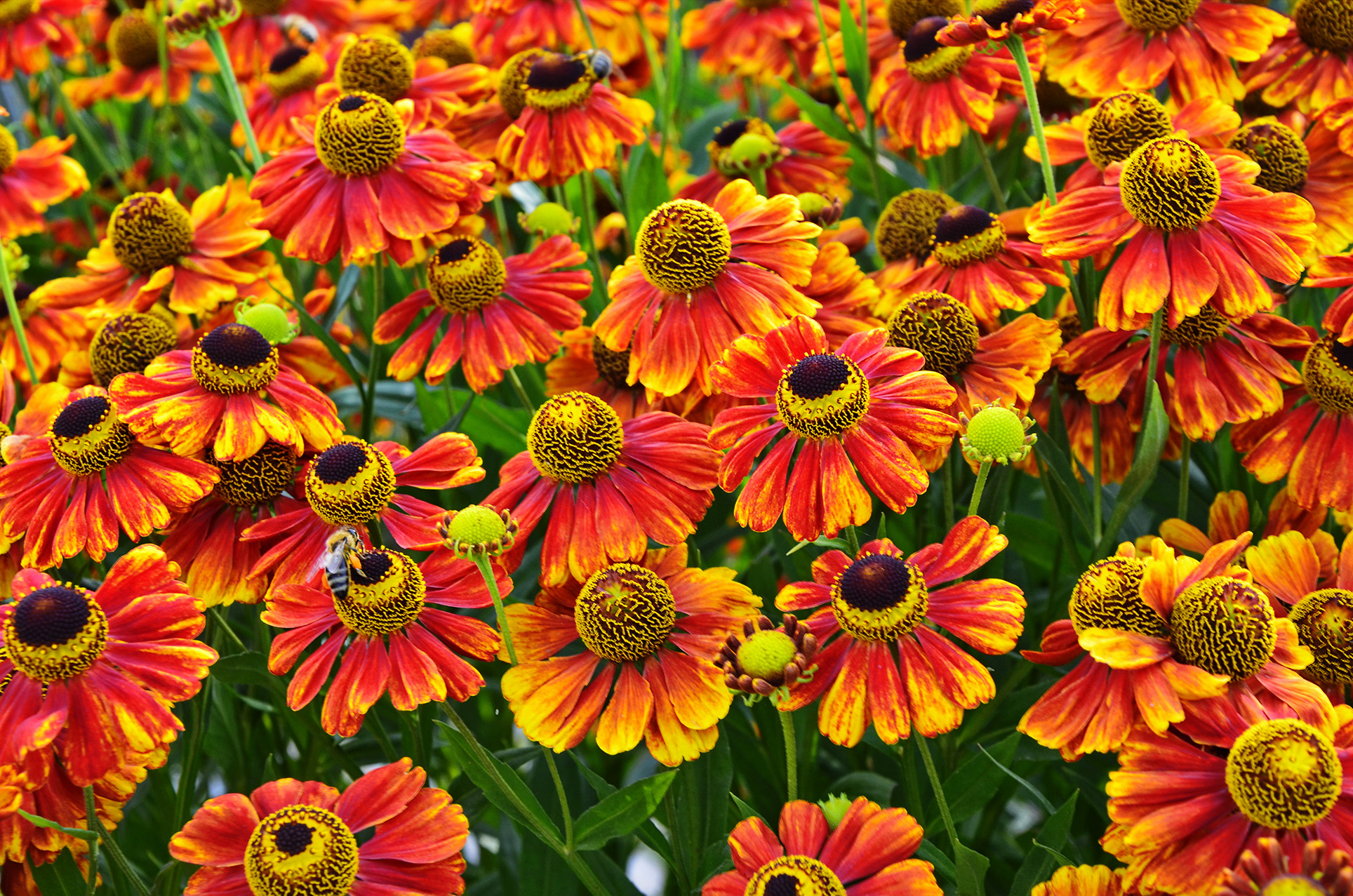
Heleniums have charming, daisy-like flowers and are guaranteed to bring vibrant colour to the garden from late summer and add depth to an autumn planting scheme. I particularly like the fact that as the flowers age, the petals curve backwards.
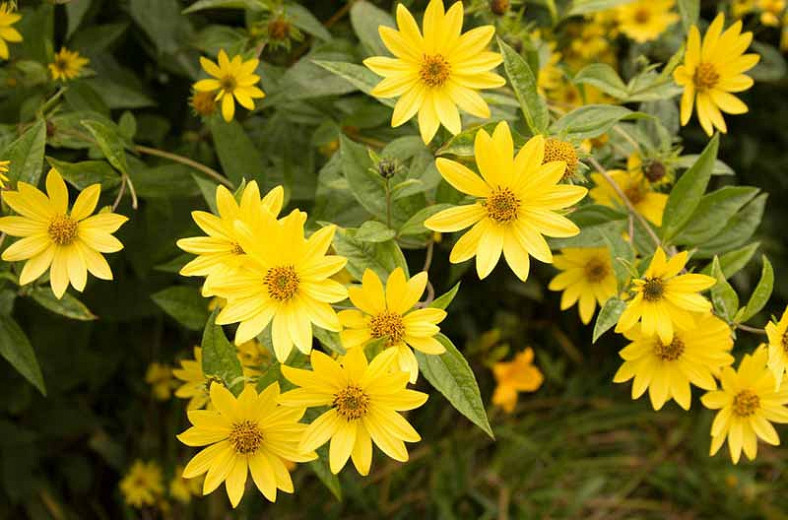
Helianthus ‘Lemon Queen’ adds height to your border as it can grow over 7’ tall after a couple of years. Strictly speaking, this flower, given the Award of Garden Merit (AGM) is a tuberous perennial, but it is reliably hardy so doesn’t need digging up like a dahlia would.
We’re fast running out of space when I have so many more suggestions! But as some will still be flowering in autumn, they’ll keep.
That’s all for this month, but over the next few months, there’s plenty to look forward to including front garden ideas, taking your garden plants when you move house, choosing fruit trees, planting and forcing bulbs, and winter garden inspiration.
Marie
About the author
Marie Shallcross is an advocate of edible ornamental gardens - beautiful, practical spaces that are both human friendly and wildlife friendly. She is the owner of Plews Garden Design, offering bespoke Gardening Lessons where your garden is your classroom. As well as Garden Design, Planting Designs, and Garden Consultancy.
A member of the prestigious Garden Media Guild, Marie writes a weekly award-winning gardening blog – Plews Potting Shed - plus articles for various publications and websites.





























